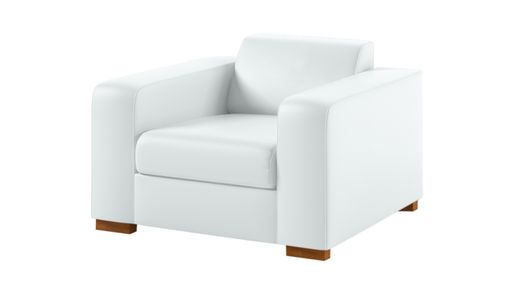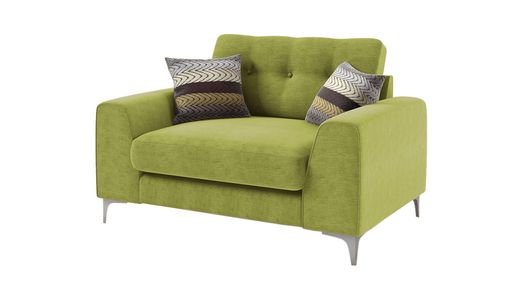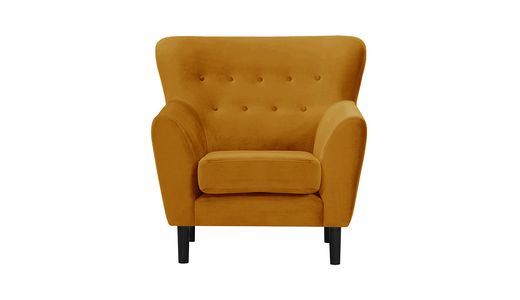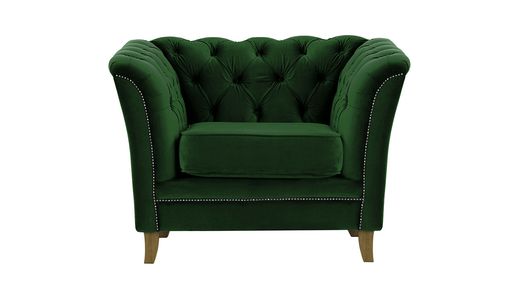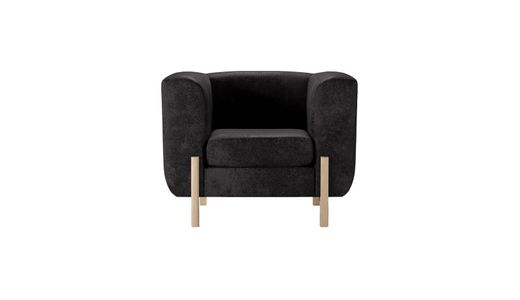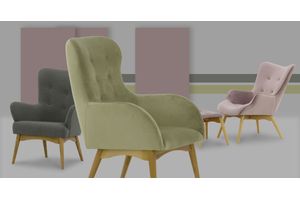
The Art of Armchair Material Selection: Leather, Fabric or Other Material?
Choosing the right material for furniture, such as a chair, can significantly impact the comfort, appearance, and durability of your interior. What should you consider when deciding between leather, fabric, or other materials? In this article, we will explore the advantages and disadvantages of various options to help you make an informed choice.
Leather: Elegance and Luxury
Leather is a material that has been associated with luxury and elegance for centuries. In the first chapter of our article, we will delve into the benefits and drawbacks of leather as a material for chairs, uncovering why it is highly regarded in interior design and the factors that should influence your decision.
Advantages of Leather in Furniture
- Elegant Appearance: Leather has long been synonymous with luxury and elegance. Chairs made from this material exude style and lend a refined character to any interior. However, that's not its only advantage.
- Durability and Easy Maintenance: Leather is significantly more durable than many other materials. Its smooth surface makes it easy to keep clean, and stains and dirt can usually be easily removed.
- Availability in Various Colors: Leather is available in a wide range of colors and shades, allowing you to match it to nearly any interior style.
- Longevity: Leather is known for its longevity, meaning a chair made from this material will serve you for many years.
Disadvantages of Leather in Furniture
- High Cost: One of the primary drawbacks of leather is its price. Chairs made from genuine leather are typically much more expensive than models made from other materials.
- Vulnerability to Damage and Scratches: Leather, especially genuine leather, is susceptible to scratches and mechanical damage, which can affect the aesthetics of the furniture.
- Regular Maintenance Required: Leather requires regular maintenance, including conditioning and cleaning with specialized products, to maintain its quality and flexibility.
When Is It Worth Choosing Leather for a Chair?
Leather is an excellent choice if you value elegance, durability, and have an appropriate budget. If you are looking for a more environmentally-friendly alternative, consider models made from eco-leather, such as the London Armchair. Another stylish example is the Sutton Armchair, which combines elegance and comfort.
Fabric: Comfort and Variety
Fabric is a material that prioritizes comfort and diversity. In the second chapter, we will explore the advantages and disadvantages of fabric-upholstered chairs, explaining why it can be an excellent choice for those who value comfort and want to customize their chair to individual preferences.
Advantages of Fabric in Furniture
- Comfort and Coziness: Fabric-upholstered chairs are exceptionally comfortable and pleasant to the touch. They are an excellent choice if comfort is a priority.
- Wide Range of Patterns and Textures: Fabric offers a vast diversity of patterns, colors, and textures, allowing you to tailor the chair to your taste and interior style.
- Affordable Price: Compared to leather, fabric-upholstered chairs are usually more budget-friendly, making them accessible to a broader range of customers.
- Flexibility: Fabric is flexible, enabling more intricate and sophisticated furniture designs.
Disadvantages of Fabric in Furniture
- Higher Maintenance Than Leather: Fabric is more susceptible to stains and dirt than leather, which may require more regular and intensive maintenance.
- Less Stain and Dirt Resistance: Fabric is more prone to stains, and it can be more challenging to clean compared to leather.
When Is It Worth Choosing Fabric for a Chair?
If you prioritize comfort, a wide variety of choices, and a more affordable price, a fabric-upholstered chair can be an ideal solution. An example of an intriguing model could be the Armchair Content.
Other Materials: An Alternative Choice
In the third chapter, we will explore alternative materials such as synthetic materials, wood, and metal. We will discover when it's worth considering options other than leather and fabric and the unique benefits these less conventional materials offer.
Synthetic Materials
Synthetic materials like eco-leather or microfiber are becoming increasingly popular in furniture production. They are often more affordable than natural leather and offer a range of unique advantages.
- Environmentally Friendly: Eco-leather is eco-friendly, making it a suitable option for environmentally conscious individuals.
- Durability: Synthetic materials can be just as durable as natural leather, while being more resistant to mechanical damage.
- Wide Range of Colors and Textures: Synthetic materials are available in numerous colors and patterns, allowing for diverse furniture designs.
Wood and Metal
If you're looking for furniture with a modern or industrial character, it's worth considering chairs with wooden or metal elements. Wood adds warmth, while metal imparts a raw charm.
When Is It Worth Considering Other Materials for a Chair?
The choice of other materials depends on your style, needs, and preferences. If you value a luxurious appearance and durability while avoiding animal-based products, a velvet chair, like the Opus Velvet Armchair, may be a suitable option.
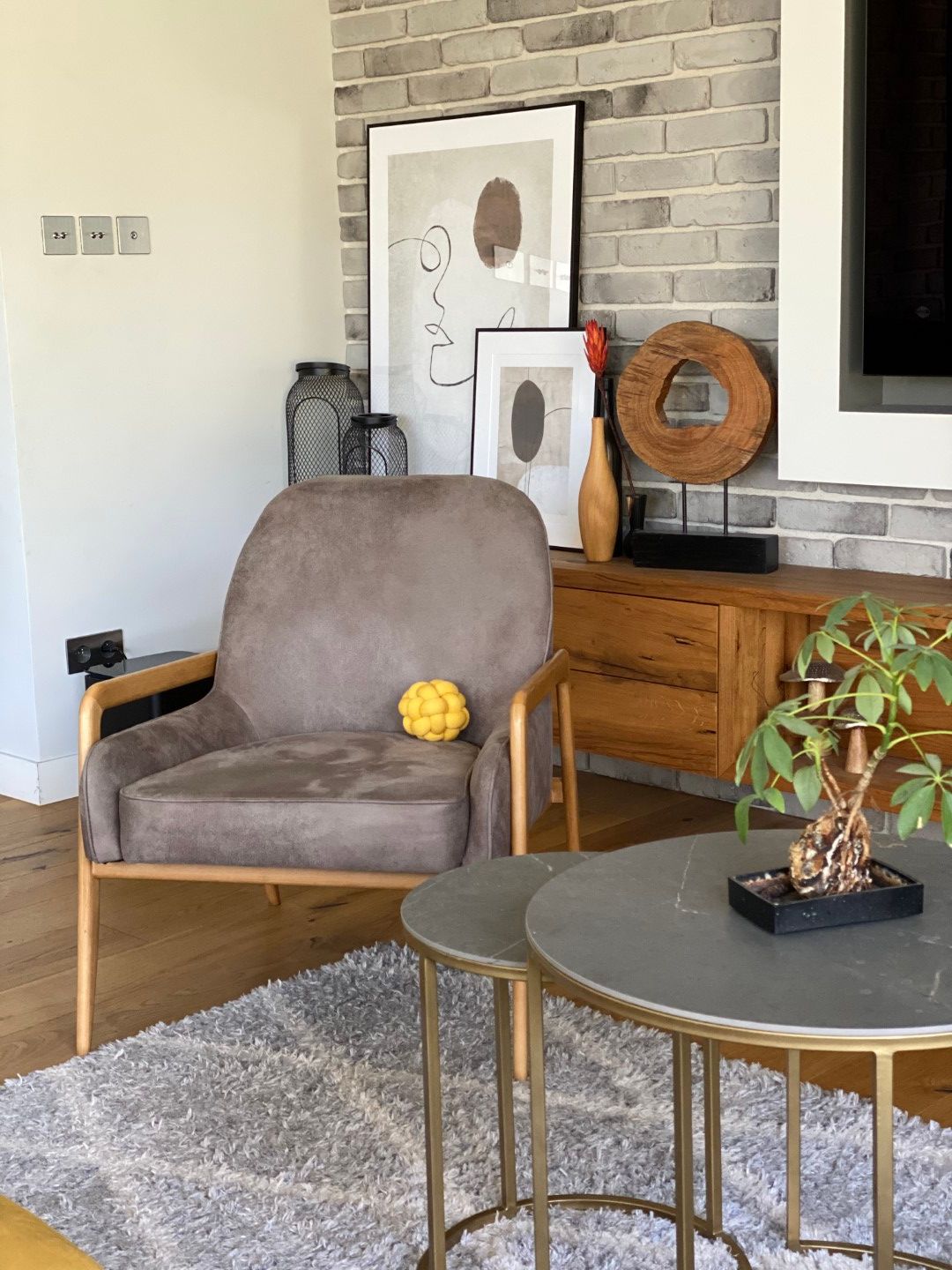
Factors Influencing Material Choice
When choosing the material for your chair, several essential factors should be considered:
Interior Style and Character
The material should harmonize with the overall interior style. Leather adds elegance, while fabric offers a cozier feel.
Chair's Purpose
Is the chair intended as the primary relaxation spot or more as a decorative element in the interior? The material choice depends on how it will be used.
Budget
Budget is a significant factor. Leather may be pricier, but more affordable alternatives like synthetic materials exist.
Aesthetic Preferences
Your personal preferences play a crucial role in material selection. Choose the one that appeals to you the most.
Environmental Value and Eco-Consciousness
If environmental protection is a concern, consider eco-friendly and renewable materials.
Care and Maintenance Tips
To ensure your chair serves you for many years, proper care is essential. Here are some tips:
Caring for Leather
Regularly clean leather with specialized leather care products. Avoid using harsh chemicals that can damage the leather's surface. Protect leather from excessive exposure to sunlight to prevent fading and deformation.
Maintaining Fabric
Remove stains promptly using suitable cleaning products tailored to the fabric type. Regularly vacuum and clean the fabric to prevent the accumulation of dust and dirt.
General Chair Maintenance
Avoid overloading the chair to prevent structural damage. Periodically inspect and maintain metal or wooden components to ensure their durability. Pay attention to any signs of wear and take appropriate action to prevent further damage.
In conclusion, choosing the right material for your chair is a crucial aspect of interior design. Leather, fabric, and other materials each have their unique advantages and disadvantages, making it essential to carefully consider your needs and preferences before making a choice. Additionally, regular maintenance will help you enjoy your chair's functionality and aesthetics for many years. Regardless of your choice, your chair can become the centerpiece of your interior, combining comfort and style.


